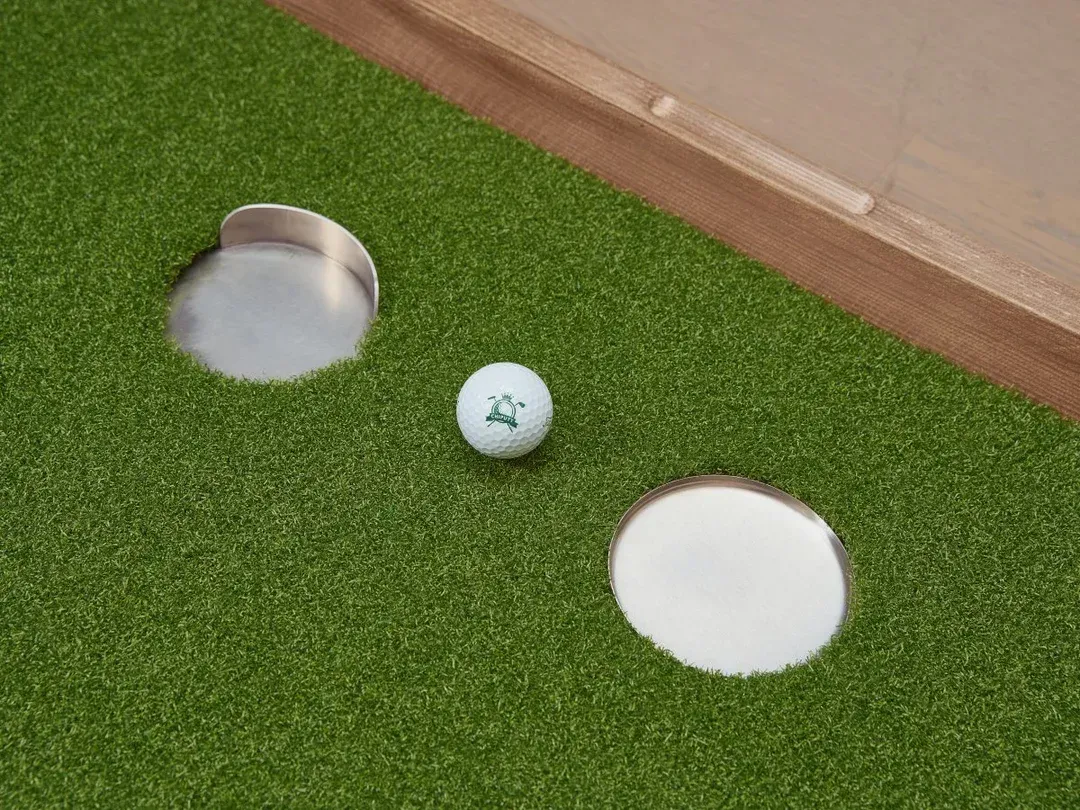Why You Need To Know Your Short Game Handicap
Alright, folks, let's talk about the real magic on the golf course: the short game.
We all watch those pros on TV, right? They're throwing darts, saving pars like it's their job (because, well, it is). But here's the secret they don't always tell you: you can get in on that action too.
Forget crushing 300-yard drives for a second. We're talking about those crucial shots inside 9-iron range. That's where rounds are won and lost. That's where you turn those frustrating bogeys into sweet, sweet pars. And trust me, that feeling? It's addictive.
Now, I know what you're thinking: "My short game? It's a disaster." But here's the good news: it doesn't have to be. In fact, it's the most accessible part of your game to improve. You don't need superhuman strength or years of training. You just need a little focus and a bit of a reality check.
That's where my "Short Game Handicap" comes in. It's not about beating yourself up; it's about giving you a clear, honest picture of where you're at and where you can go. Think of it as your personal roadmap to lower scores.
Here's the idea: once you're inside that scoring zone—9-iron and in—par is your baseline. And for us regular golfers, getting up and down in three strokes or less should be the goal. Heck, let's aim for two!
Let's break it down:
- Your Last Round: What did you shoot? (Be honest!)
- Missed Greens: How many times did you miss the green with a 9-iron or less, from 30 yards or more?
- Up and Downs: How many of those misses did you recover from with an up and down?
- Long Chips/Pitches: How many other chips or pitches did you hit that ended up more than 10 feet from the hole?
Now, let's do some simple math:
- Subtract your up and downs (#3) from your missed greens (#2).
- Take half of your long chips/pitches (#4) and add that to the result.
That's your Short Game Handicap. It's the number of strokes you're likely leaking around the greens.
Example:
- You shot 84.
- You missed 6 greens.
- You got up and down twice.
- You hit 9 other chips/pitches outside 10 feet.
Calculation: 6 - 2 = 4. Half of 9 is 4.5. 4 + 4.5 = 8.5. So your short game handicap is 8.5
Why does this matter? Because it's a wake-up call. It shows you where your biggest scoring opportunities are. And here's the best part: you can fix it.
Imagine shaving 8 strokes off your game just by improving your short game. That's the power we're talking about.
Here's my challenge to you:
- Do this calculation after your next few rounds.
- Take a lesson or two from your local pro.
- Practice your chipping and pitching with purpose.
This isn't just about lowering your handicap. It's about enjoying the game more. It's about feeling confident around the greens. It's about knowing that you're in control.
So, let's hear it, folks. Share your Short Game Handicap. Let's start a conversation and get better together. Because trust me, those magical shots you see on TV? They're within your reach.
This is Golf as You've Always Imagined!
Daniel is a Top 100 Golf Coach, PXG Staff Pro, World Long Drive Coach and the Head of Golf Instruction at IMAGEN Golf the area's leading golf instruction and advisory firm, host of the IMAGEN Golf podcast and Best-Selling Author of "Unleash The Golfer Within".
For more information visit www.ImagenGolf.com
or call 215-595-6299 Reach out to Daniel directly at:Daniel@ImagenGolf.com
For free golf tips and more listen to The IMAGEN Golf Podcast on Spotify, Apple Podcast or wherever you get your podcasts and follow us:
Instagram @ Imagengolf
Twitter @imagengolf
Facebook Imagengolf
TikTok @ GolfBetterGuaranteed
Youtube ImagenGolf

The calendar page is about to flip, and with it, the conversation that's been bubbling beneath the surface of the golf world is set to boil over: Tiger Woods turns 50 on December 30th. That golden birthday means a gold-plated invite to the PGA Tour Champions. As President of Imagen Golf, I've spent years analyzing swings, but with Tiger, we're not just looking at a swing—we're analyzing the DNA of a champion's competitive spirit, and that is where the real story lies.

Hello, I'm Daniel Guest from Imagen Golf, and today we're tackling a topic that chills many golfers: playing in the cold. It’s not just you; the cold weather fundamentally changes how your equipment—specifically the golf ball—performs, and that directly impacts your shot.1 Understanding these effects is the first step toward better cold-weather scoring.

Hey everyone, Daniel Guest here—Top 100 Coach, #1 Instructor in PA, and founder of Imagen Golf. I've given over 39,000 lessons, and if there's one thing I know, it's that the game is always evolving. We're not just practicing anymore; we're training smarter than ever. The days of just grinding on the range are over. The future of golf instruction is personalized, tech-driven, and focused on your unique blueprint. Let's dive into the three biggest game-changers you need to leverage right now to Unleash the Golfer Within!

NEWTOWN, Pa. - Oct. 12, 2025 -- Newtown and surrounding communities are about to experience golf like never before. The Golf Place, a state-of-the-art indoor golf facility designed for enthusiasts of all skill levels, from those honing their game to those simply seeking a fun, engaging golf experience, today announced its grand opening for Tuesday, October 25, 2025. The Golf Place is poised to become the region's premiere destination for indoor golf instruction, practice, and play. The facility will feature eight cutting-edge Trackman golf simulators, offering hyper-realistic gameplay, detailed swing analysis, and access to the world's most famous courses.






